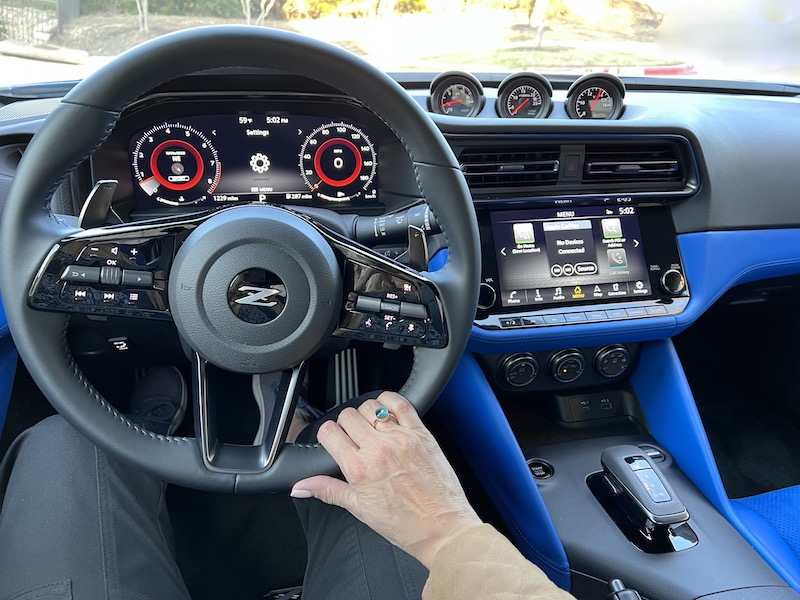Want To Avoid a Car Crash? Nissan Says “Get Some Sleep”
Better sleep is the best way to prevent a car crash, research from Nissan found. The company studied brain health to help its race team; here's what they learned that you can use, too!

Safe Drivers Can Prevent Car Crashes. And the Safest Ones are Good Sleepers.
Imagine this. It’s late; you had about five hours of sleep last night, and you’re contemplating driving across town to get the extra bits and bobbles for the kids’ lunches. You know they could probably buy lunch tomorrow but decide that “it’s just around the corner. It’s only fifteen minutes away…”
Drowsiness is setting in, and then suddenly, the tragic and unexpected happens. What started out as an ordinary late-night grocery run turns into a sad news story and a parable about dangerous driving habits.
According to the National Sleep Foundation, approximately 100,000 crashes per year happen as a result of drowsy drivers. These accidents actually cause over $12.5 million in damages and over 71,000 injuries. The numbers are insane, and the tragedies are preventable. In fact, Dr. Matthew Walker, professor of Neuroscience and Psychology at the University of California, Berkeley and lauded sleep expert, says, “The answer is obvious… we put ourselves in (that situation) when we neglect our sleep.” Funny enough, in a world that tells us that we must be uber-productive at all times, the news is refreshing – sleep is where the magic lies.
Related: Car Naps: Why to Take Them, How to Do Them

These doctors want you to avoid car crashes. Photo: Nissan
What’s the Scoop?
In his conversation with Dr. Lucian Gheorghe, who heads up the Brain to Performance program, Dr. Walker shared some startling statistics derived from the testing program: Drivers who have less than 4 hours of sleep have an 11.5-times greater crash rate compared to those who get at least 7 hours of sleep during a 24-hour period. The study data also notes that the risk decreases with each hour of sleep that a driver gets.
Once you dig into the data, you realize how slippery the slope is. The crash rate gradually increases. The subtle shift is almost imperceptible at first, gradually increasing from 1.3x to 1.9x when the sleeper’s rest decreases from 6-7 hours and 5-6 hours. As the sleeper goes from 5-6 hours to 4-5 hours, the rate nearly doubles to a 4.3x greater crash rate, and according to the AAA Foundation’s Traffic Safety study’s results, that rate exponentially triples at less than 4 hours of sleep. It is simple to see how the danger dramatically increases and how a preventable issue takes on a hazardous life of its own.
Discovered as a part of the research done to improve Nissan’s Formula E (Nismo | Formula E | Nissan) drivers’ cognitive focus, reaction times, and decision-making skills, Dr. Gheroghe realized that the information is applicable to everyday drivers as well. “If I can find a method to make very good drivers a tiny bit better, then I’ve got a good chance to help average drivers become better, too,” said Gheorghe.
Related: Safety, Good Driving, Speed: Driving Tips My Mom Taught Me

The view from the driver’s seat in the Nissan Z. Photo: Scotty Reiss
From Formula E Racing to Everyday Drivers, Sleep Matters
When Nissan needed to create a Formula E team worthy of the NISMO badge and wearing the name, they went all in and created a whole program to support its development. Out of that programming came the Brain to Performance Program. The stellar vehicle wears the NISMO badge and is a history-making step for Nissan the brand. It became the first Japanese automaker to enter the all-electric series back in the mid-2010s.
Now, in its 10th season, the competition is intense along the Formula E circuit, and Nissan sought to find every edge and margin they could. Through Dr. Gheorge and Team’s research into what would improve their Formula E (Nismo | Formula E | Nissan) drivers performance, cognitive focus, reaction times, and decision-making skills, the results ended up being surprisingly simple. Rest, namely sleep, is a vital component.
Dr. Gheorge’s data found that rest, i.e., sleep, plays a huge role in the capacity of drivers to make good decisions and be safe out there on the road. As a result of further study, when he took a step away from the data, Dr. Gheorge realized that the information that he was gathering and synthesizing was applicable to everyday, non-professional drivers as well. “If I can find a method to make very good drivers a tiny bit better, then I’ve got a good chance to help average drivers become better, too,” said Gheorghe.
Related: 6 Safe Driving Tips to Model and Teach Your Teens
About Nissan’s Brain to Performance Program
Originally designed as a driver training program to help improve the results of Nissan’s Formula E Team, the program created results that are applicable to every driver. The goal was to figure out how to help already talented drivers be better, more efficient drivers. A secondary goal was to determine how to train a brain to perform optimally and inform the design of the brand’s upcoming electric vehicles.
Once the drivers’ brains were mapped and analyzed under various conditions, the results were remarkable and simple. They had a variety of applications that made good sense for professional drivers as well as moms dropping their kids off at the playground. At the core of the program, the Center found that Sleep played a huge role and that the more sleep you get, the better driver you will be.

The trunk space in the 2024 Nissan Pathfinder. Photo: Chastity Velasquez
What’s the Best Advice?
You might think that’s all fine and good, but how can you, as a driver, get more sleep? What are some things that are helpful to remember and note on your journey to becoming a better, more well-rested human?
- Figure out your rhythm. Everybody has a natural flow and system that they enjoy working within. Rather than fighting it – work with your body’s natural sleep rhythm. Notice the sequence when you feel well-rested and comfortable. Use that information to maintain regular sleep and wake times.
- Embrace the dark. Reduce the stimuli in your space and limit your sensory intake. Bring down the lights about an hour before you intend to rest to signal to your body that it’s time to rest and that sleep is coming.
- Minimize the caffeine. The drug is a common additive to drinks and snacks designed to keep you moving, functioning, and productive. It’s no wonder, as it keeps the body alert for at least 6 hours. Use caution, as while it will keep you awake, it also impacts the quality of your sleep.
- Put away your phone. If you are anything like us, you might be firmly addicted to this portable distraction device. It keeps the mind running, and you ‘on’—grant yourself the gift of off time.
- Cool your body down. Temperatures rise, and the type of fabric you choose to wear will impact your freedom of movement, ability to rest, and comfort levels. Loose, breathable materials like cotton, linen, Tencel, bamboo/viscose, and hemp will keep your body cool, allow air to pass through, prevent sweating, and support peaceful rest.

Avoid car crashes with this better driver tips chart. Photo: Nissan
For more information on Nissan’s research into brain performance, visit here.
Have a thought or comment? Share it with us on social media! You can find us on Instagram, Facebook, Twitter and LinkedIn. And be sure to sign up for our email newsletter! Additionally, A Girls Guide to Cars may earn a commission from affiliate links in this story.
